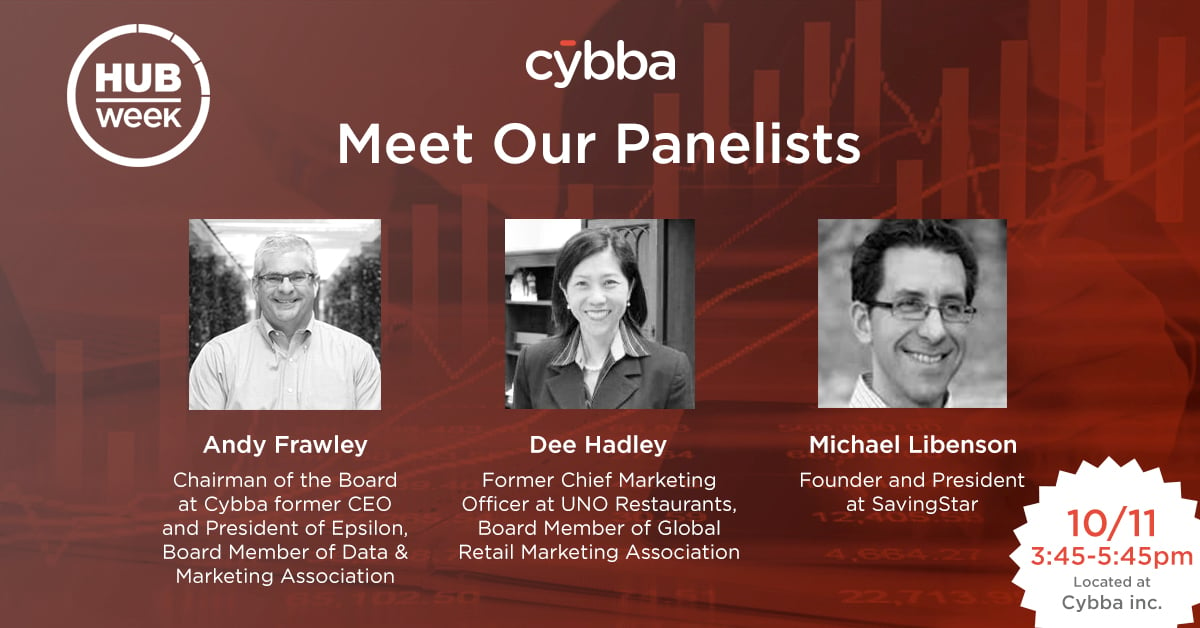“When you buy online, what motivates you to convert?”
This was the question panelists at Cybba Inc.’s Ramp-up eCommerce Conversions sought to answer. With over 100 years of experience combined, Michael Libenson, Founder and President of SavingStar, and Dee Hadley, Former CMO of UNO Restaurants and Board Member of Global Retail Marketing Association, and Andy Frawley, Chairman of the Board at Cybba and former CEO of Epsilon, shared the insights that have made their careers.
The customer journey as an emotional roller coaster:
Frawley: People buy because of an emotional connection, and these emotions can change overtime. To make an emotional connection with new audiences, think about what would connect you personally to your product and then choose the proper channel to inspire consumers.
But what if your product is made for rational purposes?
Libenson: Sometimes your product is about meeting your needs. And purchasing does depend on the product and its price.
Hadley: Buying is a combination of rationality and emotions. Sometimes people rationally opt for a lower priced product because it makes them feel smart.
What does this mean for marketing?
Libenson: Marketing is about basic relevance, such as you’ll never buy diet coke if you don’t drink diet coke. If the product is something you might buy, then the journey should be personalized.
Hadley: To build an emotional connection you need a simple, consistent brand story across all touchpoints and channels. You will define your brand story as you grow, but as we know from Chipotle’s business problems, you need to police your brand.
Frawley: Over time a product bought for rational purposes will become about emotions not rationality. Where price matters initially, long business relationships are emotional.
What about AI?
Libenson: AI is great but you still need to start with the basics. Develop relationships with your customers first and then you can make that more effective with AI.
Frawley: AI isn’t there yet, but consumer behavior is chaotic and nonlinear and AI will eventually help with that.
Hadley: Companies have all kinds of data but struggle with using it. Deciding what information to use and why is very important, and AI can help with that.
What are the best strategies you’ve seen to draw customers down your funnel?
Libenson: Know your funnel, keep it basic, and optimize each part.
Frawley: Knowing how customers are consuming your content is a big indicator of what they’re thinking. If you look at what and how they are consuming, you can see their intent to leave the funnel before they do.
Hadley: Keep in mind what your customers are looking for. A simple journey makes it effective.
Finally, eCommerce is only 11.7% of the retail industry. How can offline channels bridge online?
Frawley: There is tremendous opportunity for brick and mortar stores to increase their digital marketing. The consumer and digital world are currently too separate in marketing and delivery.
Libenson: Shopping can be more omnichannel. Imagine integrating store loyalty, payments, and its checkout process with your mobile.
Hadley: It will take time. Remember that online and offline stores accomplish different needs. For instance, some restaurants will operate online and then deliver, but sometimes people go to restaurants for the service and experience. But there is no denying that there is a huge opportunity to link the two.
Thank you panelists! For additional information about Cybba’s Ramp-up eCommerce Conversions event or to speak to our experts, please contact your Account Executive or marketing@cybba.com
Continue the discussion on twitter! Tweet us @cybbainc or use our hashtag: #ConversionEfficiency


